2017 Alfa Romeo Giulia Review: First Drive


CARS.COM — If you’re browsing Cars.com right now to find out where to buy your third or fourth BMW 3 Series sedan because you think that’s what a sports sedan should ultimately be, we need to talk for a moment. You see, someone new has just moved onto the sports sedan scene in a big way, a brawny Italian who’s looking to put the hurt on the German, Japanese and American luxury contenders in a market they’ve had all to themselves for a long time. Returning to American shores after a multidecade absence, Alfa Romeo is finally back with this stunning four-door, the Giulia. And if you’re looking for a new sports sedan in 2017, you’re going to want to put one on your shopping list — because it is, in a word, magnifico.
Related: 2017 Alfa Romeo Giulia: First Look
Bold, Sculpted Styling
Let’s start with the exterior, where the traditional three-sided shield grille with Alfa Romeo badge sits up front. It’s as much a part of Alfa’s heritage as the BMW “twin kidney” grille, or Buick’s fender portholes, or Cadillac’s vestigial tailfin taillights. Flanking the grille are bi-xenon headlights with LED running lights, standard on each of the Giulia’s three available trims (Giulia, Ti and Quadrifoglio).
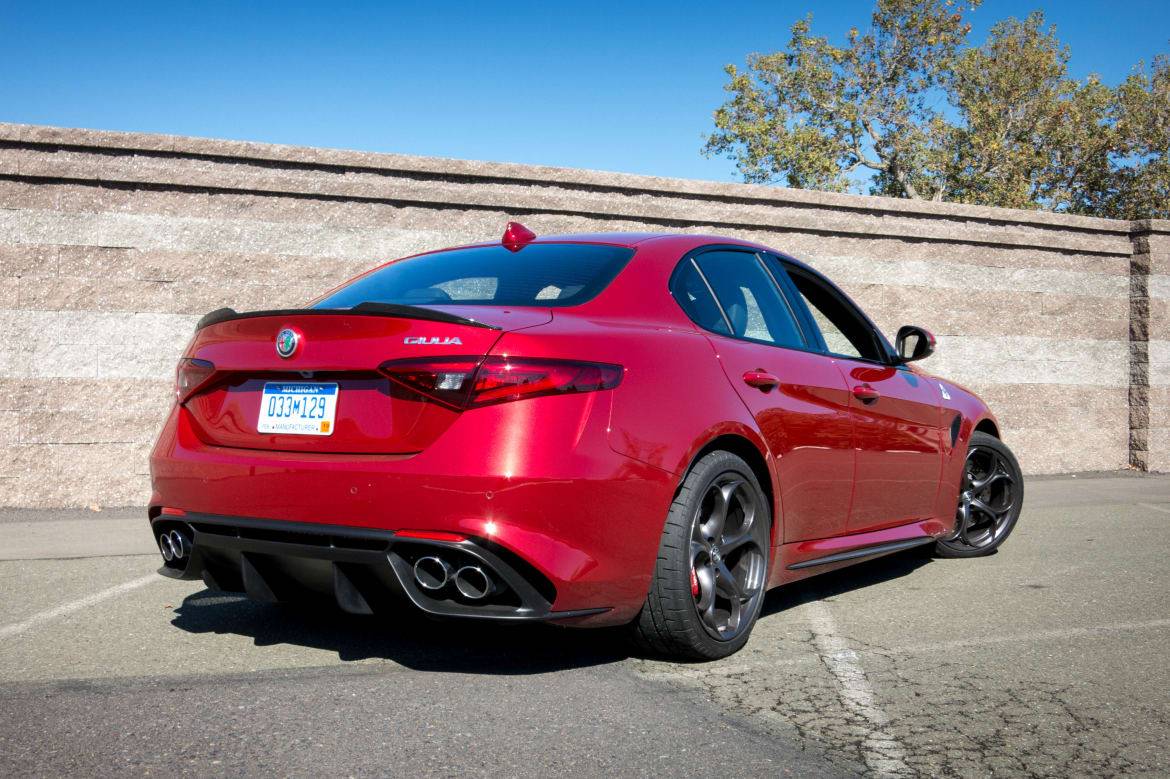
Stretching back from the headlights, you may see a four-leafed clover badge on the fenders — that indicates that the Giulia in question is the Quadrifoglio trim, which is Italian for, yep, four-leafed clover. Long story short — an Alfa Romeo racing driver from the 1920s kept coming in second in races and decided to change his luck by painting a four-leaf clover on the car. He won that race with the clover badge on the car, and so the Quadrifoglio came to be used on all of Alfa’s racing and high-performance cars since 1923 (his luck ran out driving a prototype that engineers said didn’t need the badge, crashing and sadly killing him).
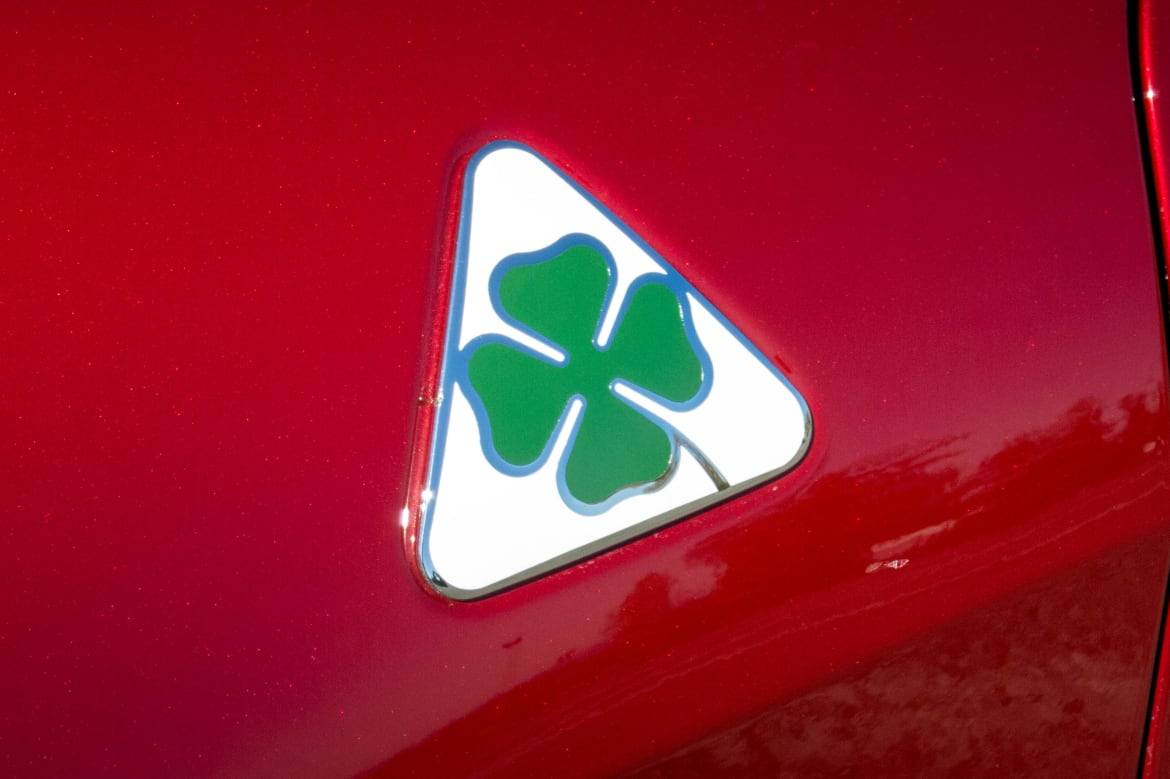
The Quadrifoglio (or QV for short, as Alfa sometimes refers to the trim, for “Quadrifoglio Verde”) also gets standard 19-inch wheels; the Giulia trim gets standard 17-inchers and there’s 18-inch wheels on the Ti. The hood, roof and rear spoiler are also done in carbon fiber to save weight, while a standard active aero carbon-fiber air splitter adorns the lower front bumper to improve downforce at high speed.
While the regular Giulia looks beautifully sculpted, the aerodynamic add-ons and more aggressive trim on the QV really make it look mean. Get one in black with standard red brake calipers (black or yellow calipers are optional) and it looks positively menacing.
Balance Makes It Better
The Giulia’s standard engine is a turbocharged 2.0-liter four-cylinder engine pumping out an impressive 280 horsepower, 8 hp more than the next most powerful competitor, the Cadillac ATS. It’s good for a zero-to-60 mph time of 5.1 seconds according to Alfa Romeo, so even the base car is seriously quick. It’s also a lot of fun to drive, too, with outstanding handling due in part to its perfect 50/50 weight distribution. This gives the Giulia a poise and neutrality that you can feel — whether you’re on the track or on the street, it’s easy to toss the car around on twisty roads or just make some rapid lane changes with zero drama or discomfort. The steering is beautifully weighted even in the base model, with an emphasis on driver involvement and sporting feel. This is what BMWs used to feel like.
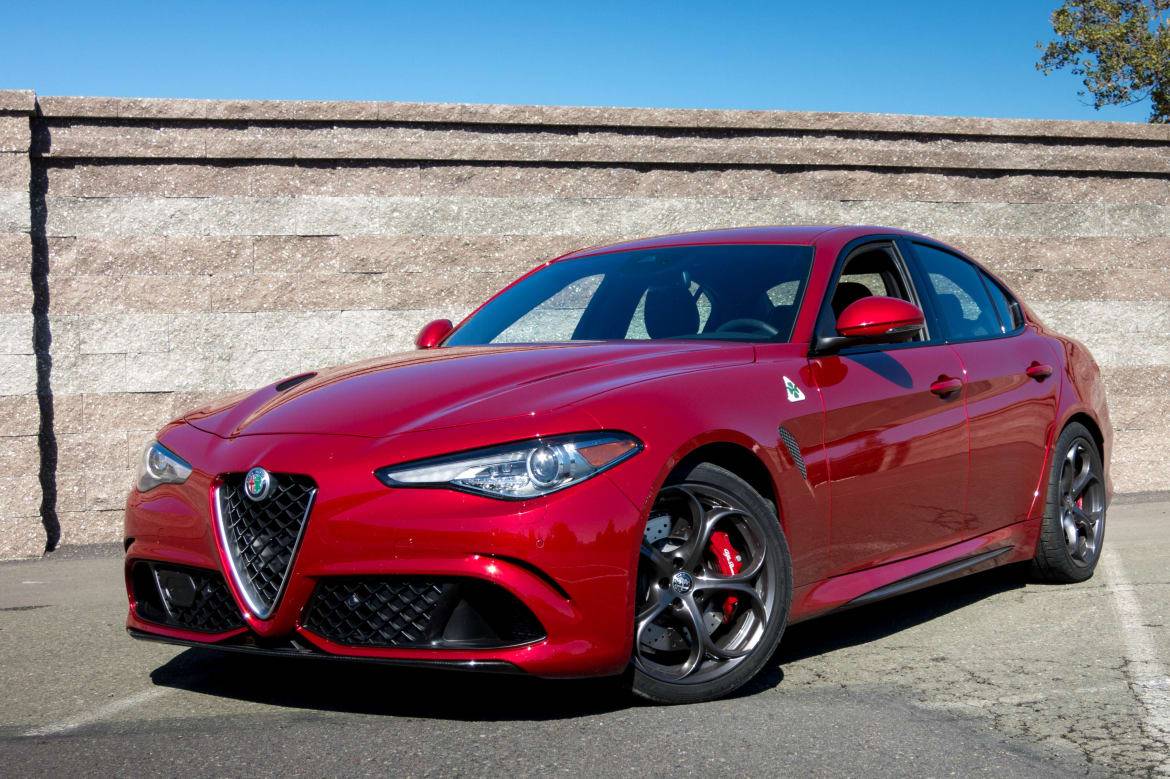
But the truly desirable model is the Quadrifoglio, which brings a twin-turbocharged 2.9-liter V-6 to the party, delivering an explosive 505 hp. Both engines are mated to a standard eight-speed automatic transmission driving the rear wheels; no manual transmission will be available in the U.S. due to anticipated lack of demand, but all-wheel drive is optional on the 2.0-liter engine.
Fire up the raucous V-6, which has been breathed on by Ferrari engineers, according to Alfa execs, and hang on — zero-to-60 mph happens in 3.8 loud, blurry seconds, with a top speed of 191 mph. A standard, showroom-stock Alfa Romeo Giulia Quadrifoglio actually set the fastest four-door production sedan lap time at the famed Nurburgring race track in Germany — beating dedicated two-seat sports cars like the Lamborghini Gallardo Superleggera.
What makes all the difference in both powertrains is the Alfa DNA selector, a rotary mode-selector knob that allows you to switch between Dynamic, Natural or Advanced Efficiency modes (“DNA,” get it?). Natural (normal) mode makes the Quadrifoglio a docile, easygoing companion in around-town driving, while Dynamic wakes things up considerably by firming the suspension performance, steering and throttle response, and modifying transmission shift points. The QV’s ride is firm, but never harsh, and can be made softer by pushing the shock adjust button in the middle of the selector — giving you the Dynamic mode with a softer suspension setting.
In any version, the Giulia is a blast to drive, a performance-focused sedan that really delivers on the sports sedan idea. Out on the track, the Quadrifoglio is highly entertaining, with massive optional carbon-ceramic brakes that are fade-free, hot lap after hot lap. You can shift the transmission yourself with the aluminum paddle shifters or let the Alfa do it for you; it always seems to know where the engine revs need to be to maximize speed out of a corner. The car rotates easily with throttle input, made even easier when you put the Quadrifoglio into Race mode (not available on 2.0-liter equipped models). It switches off all the electronic minders, allowing you to get into as much trouble as you can handle. Unlike other automakers’ sports sedans, the Giulia’s stability control is not going to save you if you overcook it into a corner in Race mode.
Not the Best Interior for an Uber
The Giulia’s interior maintains its focus on sporty performance over posh trimmings, which is different from many other luxury sedans. One item that sets it apart: Leather upholstery is standard on all Giulias. Size-wise, it’s tight — it feels narrower than competitors like the Mercedes-Benz C-Class or Audi A4 but seems comparable to other models like the Jaguar XE or 3 Series. There’s plenty of legroom and headroom up front, unless you opt for the moonroof, which eats up precious inches both in front and in back. Up front is where you’ll want to sit — backseat room is some of the tightest I’ve experienced in a compact sedan. If I adjust the driver’s seat to where I position it, I could not sit in the rear seat behind it — my feet didn’t fit into the backseat footwell. Suffice it to say that you’re not likely to see many Alfa Giulias doing duty as Uber cars.
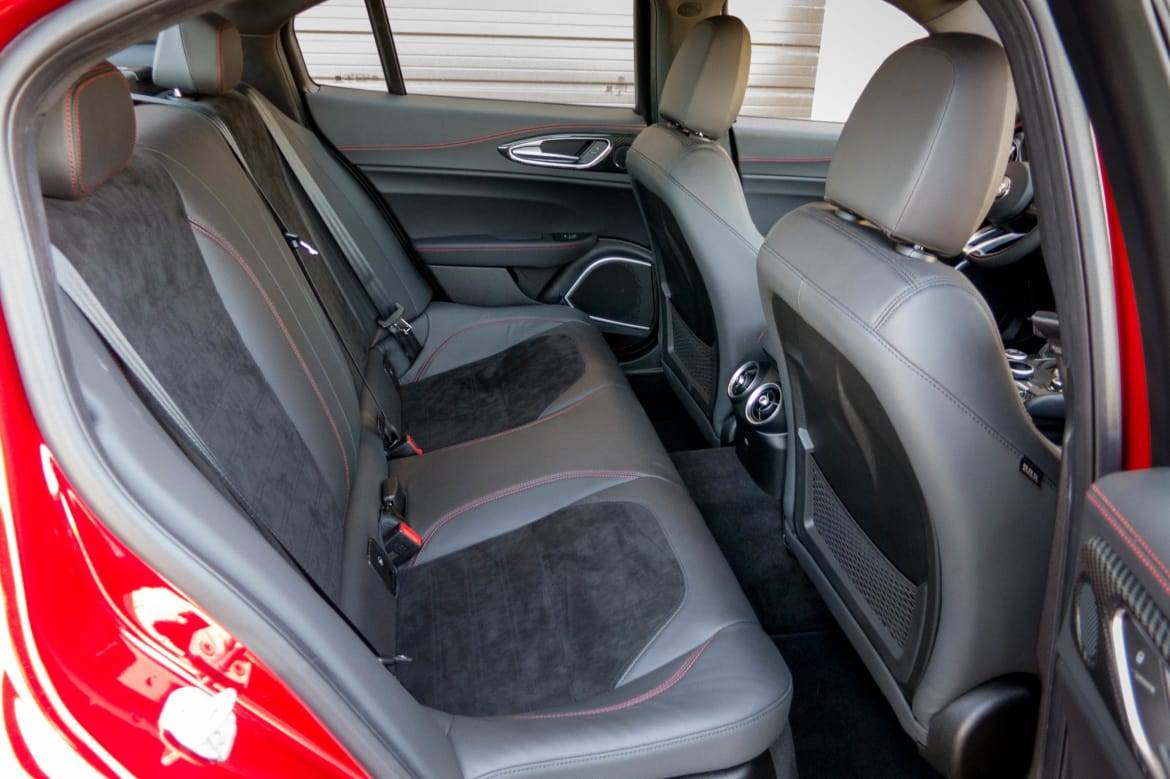
But that’s perfectly fine, as the Giulia is best enjoyed from the driver’s seat. The thin, almost delicate steering wheel is grippy but eschews the recent trend of ever thicker, ever fatter wheel rims. It’s well-molded and comfortable but looks and feels elegantly slim. Buttons and switches feel of a high quality, and materials quality for dashboard, leather trim, wood, aluminum and carbon-fiber trim is excellent as well. Alfa Romeo is not afraid to use color on its interiors either, with a hot red leather interior just one of many possible color and trim combinations.
The interior electronics aren’t exactly state of the art. The multimedia system is a little difficult to read, with a tinted cover over the screen that gives the poorly labeled navigation system’s maps a grainy appearance. The audio system is easy to use, but the sound quality is only average, even on premium systems. Alfa has created a simple, low-feature multimedia system that may not offer much, but it also doesn’t distract from driving with superfluous functions, screens or controls.
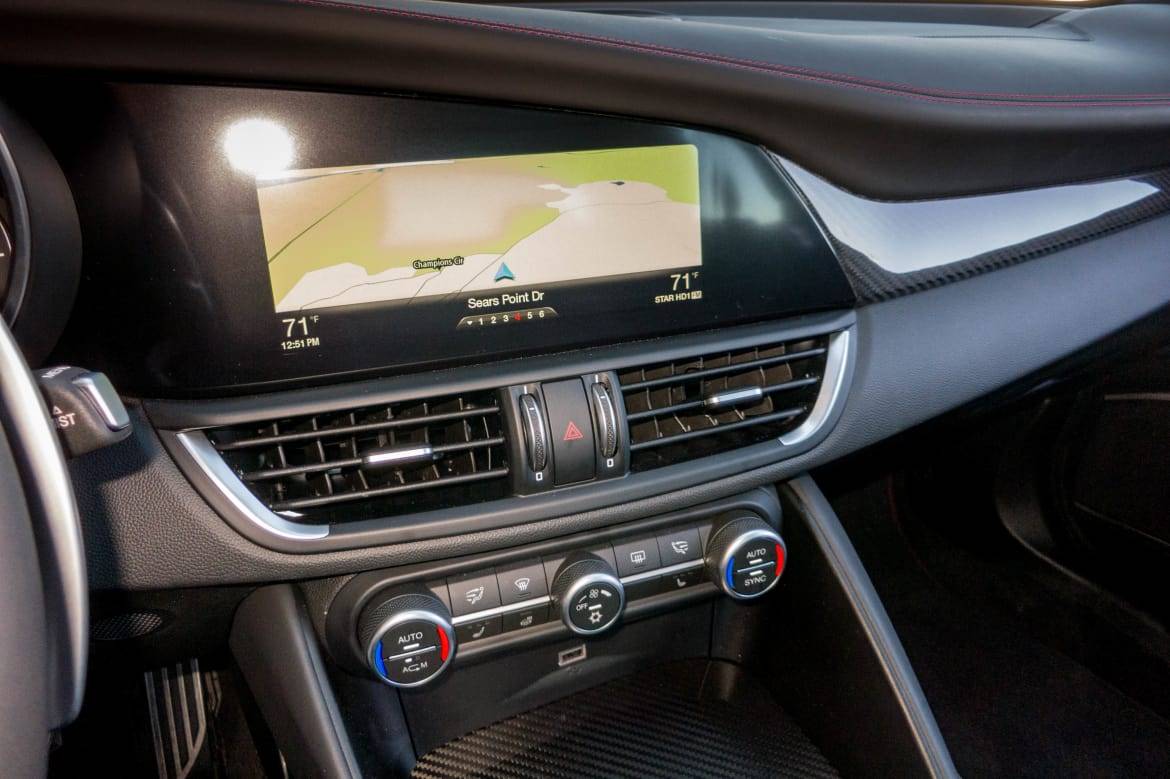
The screen between the easy-to-read gauges has less of an excuse, however. It’s very low end, which is odd since Fiat Chrysler Automobiles (Alfa Romeo’s parent company) has some of the industry’s best electronic gauge clusters and uses them on everything from the lowly Dodge Dart to the pricey Maserati Quattroporte. The Quadrifoglio also has a speedometer that goes up to 200 mph. While that’s nifty, it’s nearly useless when the majority of your time will be spent using less than 45 degrees of that speedometer’s gauge face. These are admittedly nitpicky items that don’t measurably detract from the overall outstanding driving experience.
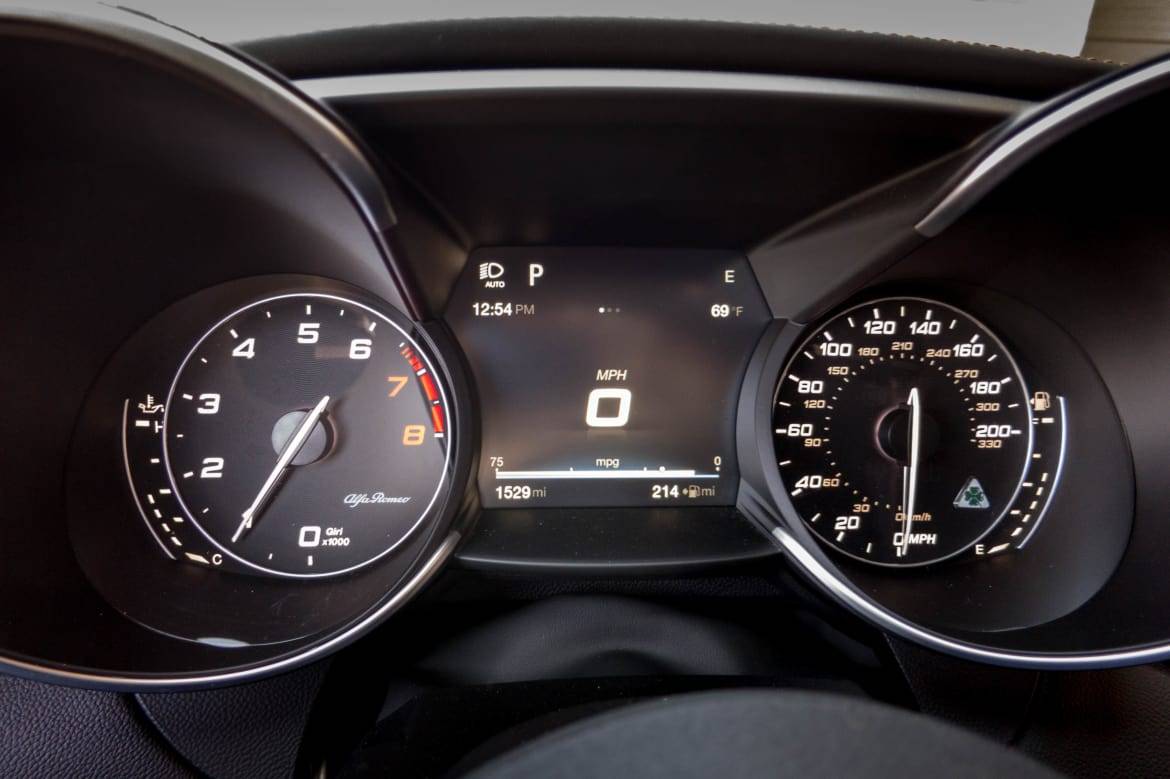
The new Giulia Quadrifoglio will first hit dealers later this year, followed by the base Giulia and Ti early next year. The Giulia will start around $40,000, with the Ti also available with Sport or Lusso (Luxury) sub-trims. The Sport brings you most of the looks of the Quadrifoglio, while the Lusso swaps out carbon fiber and aluminum for wood trim, for a touch of luxury. The fire-breathing Quadrifoglio is meant to match up against the BMW M4, Mercedes-AMG C63 and ATS-V, and will be priced around the $70,000 mark to start. There are a few packages and go-fast bits that can be had for the QV as well, meaning that price is almost certain to head north quickly.
That’s a competitive price for a highly competitive sports sedan. Even in its lower trims, the allure of something different, neither German, Japanese nor American, could be enough to bring buyers into Alfa Romeo showrooms. The Giulia is slated to be joined by an SUV built off the same platform early next year as well, and Alfa execs say there will be eight models in Alfa showrooms by 2020. That’s a major product push for a brand re-entering the market, but for younger buyers seeking authentic brands with storied histories, Alfa Romeo and the new Giulia may just hit the right combination.
Editor’s note: This story was updated on Oct. 28 to reflect that all-wheel drive is available only on the 2.0-liter engine.


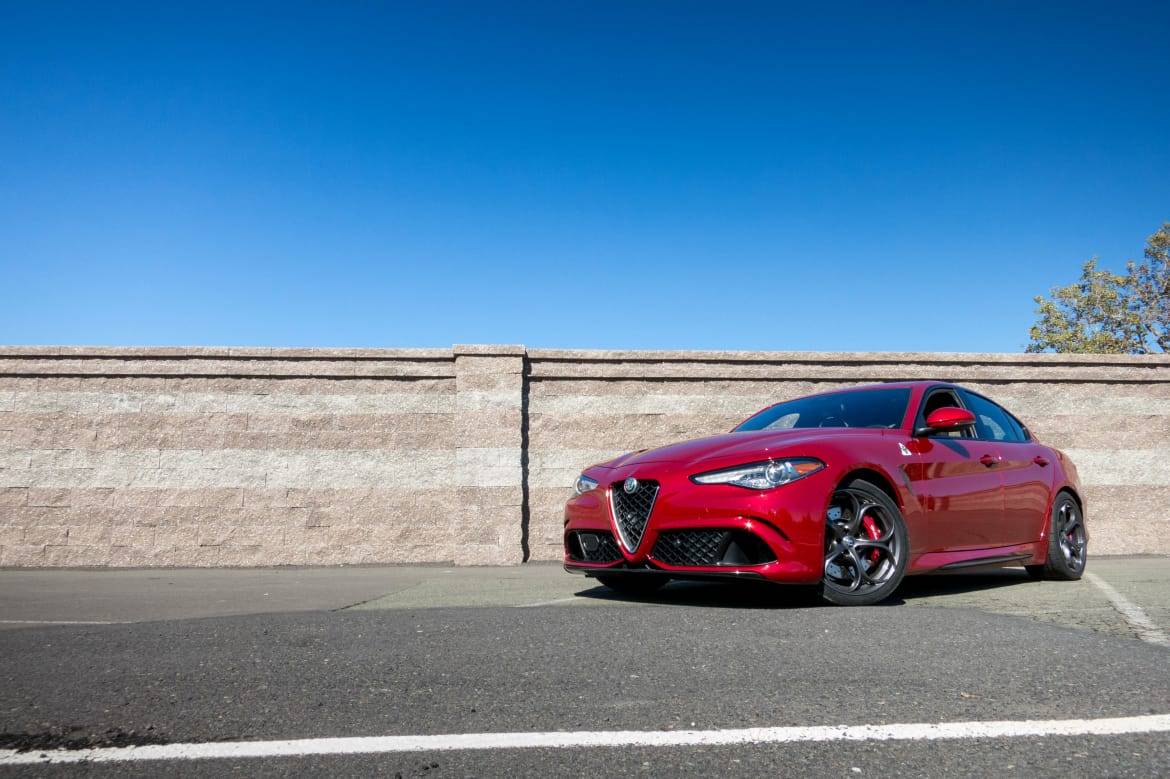

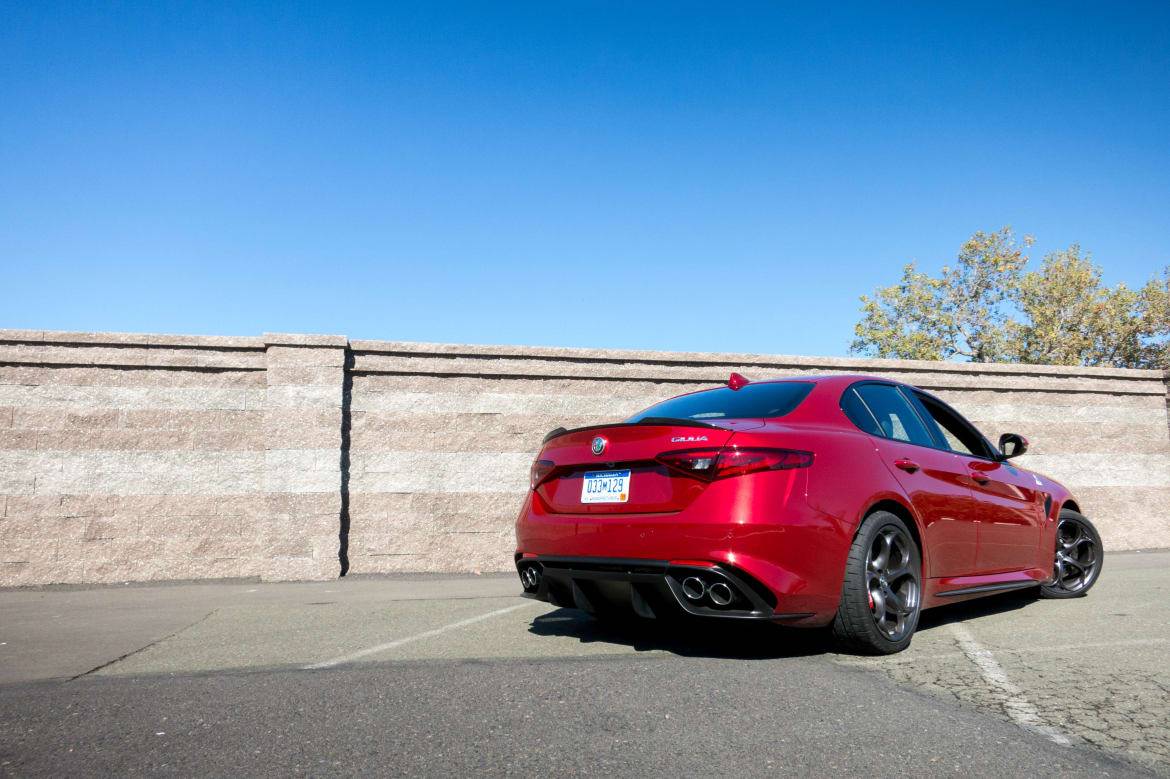
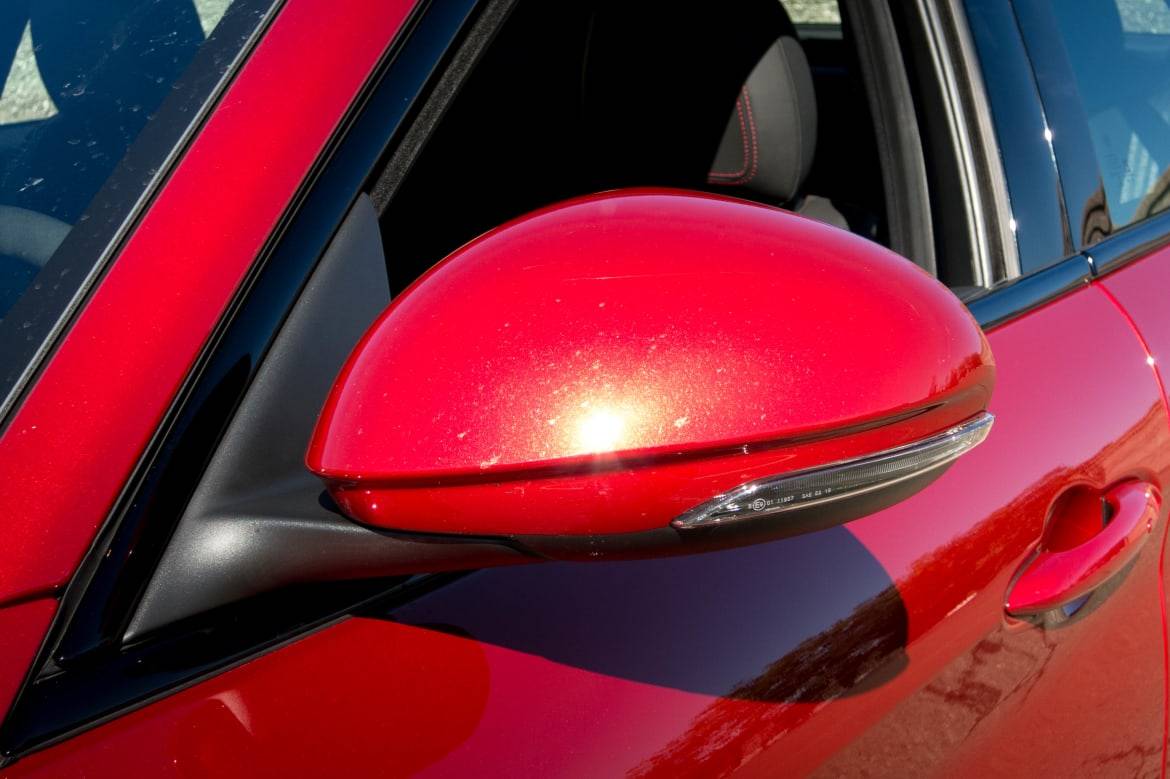
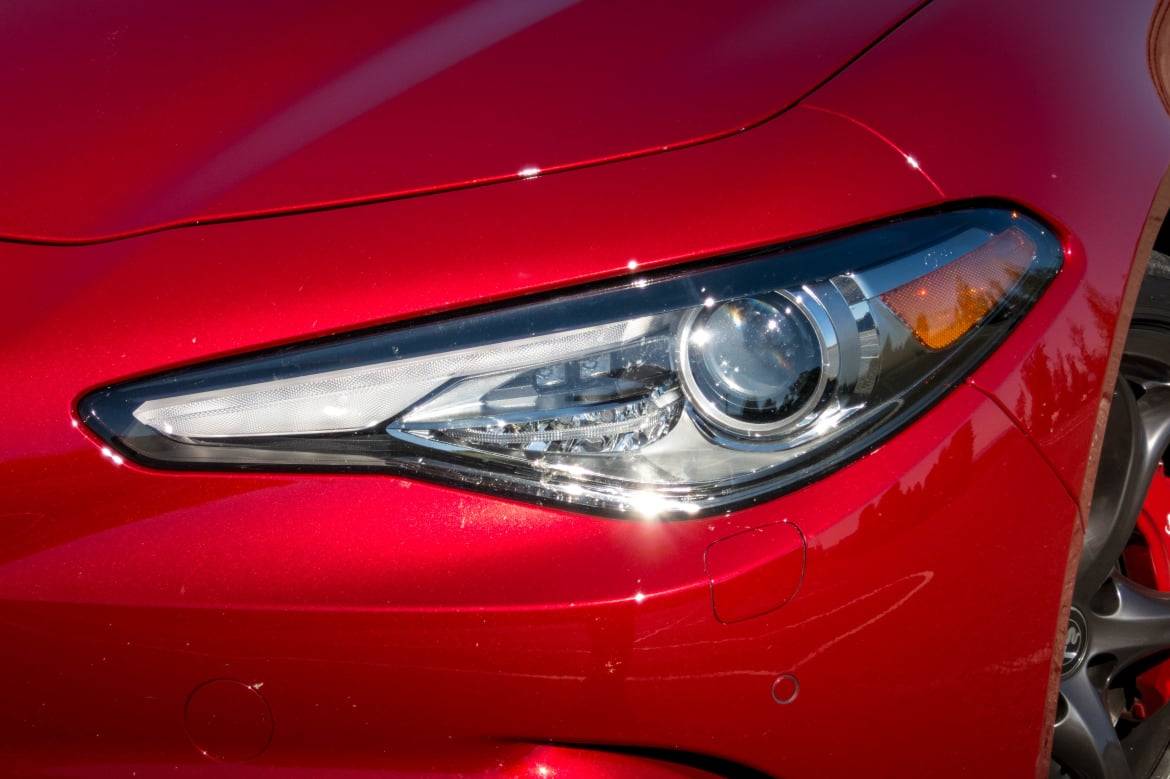
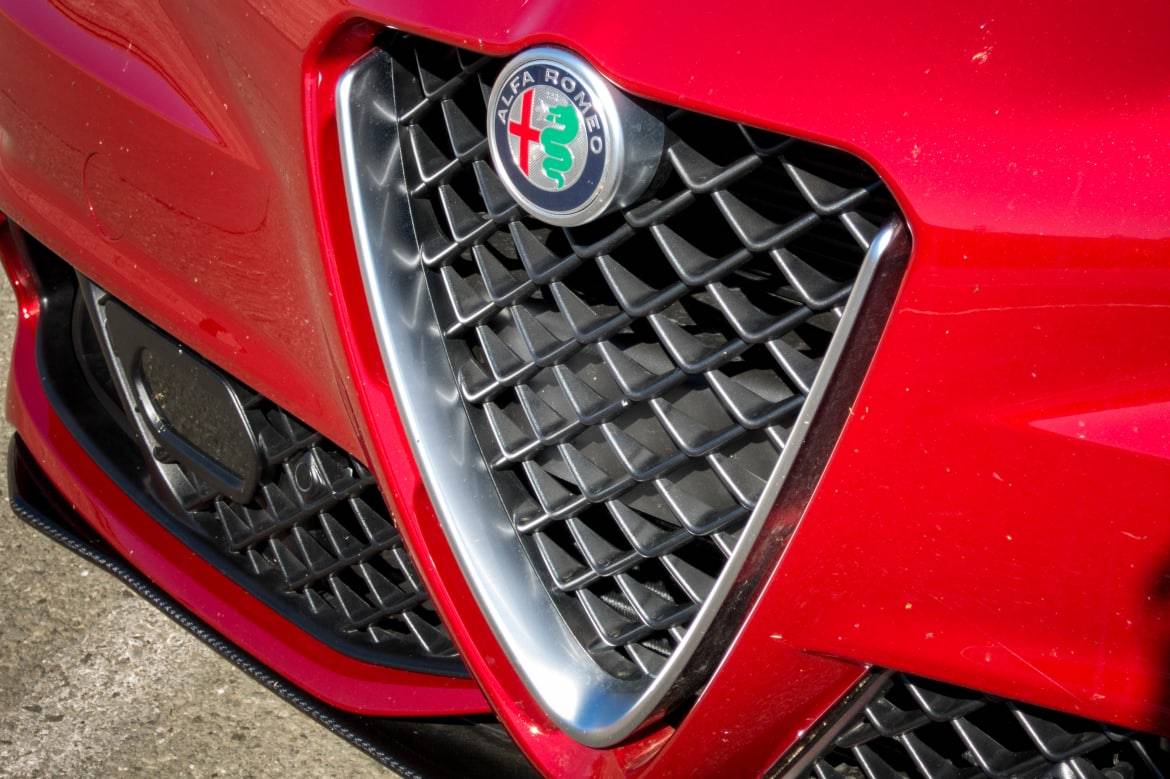
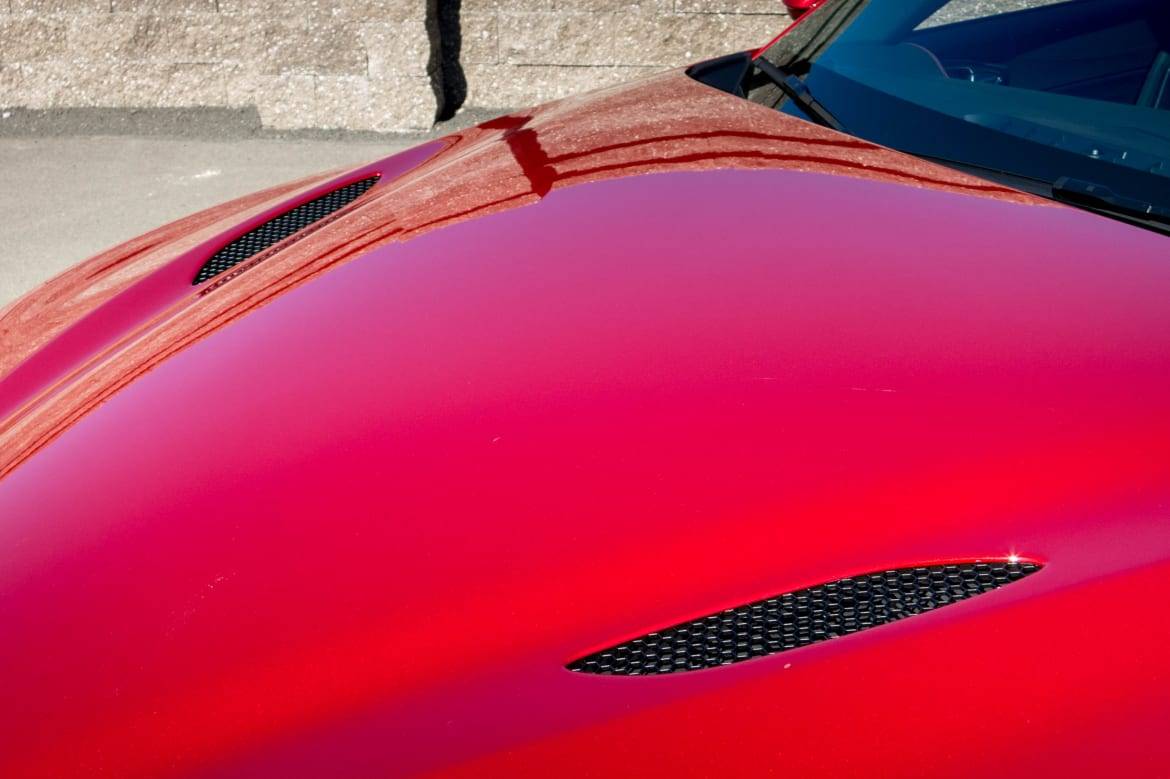
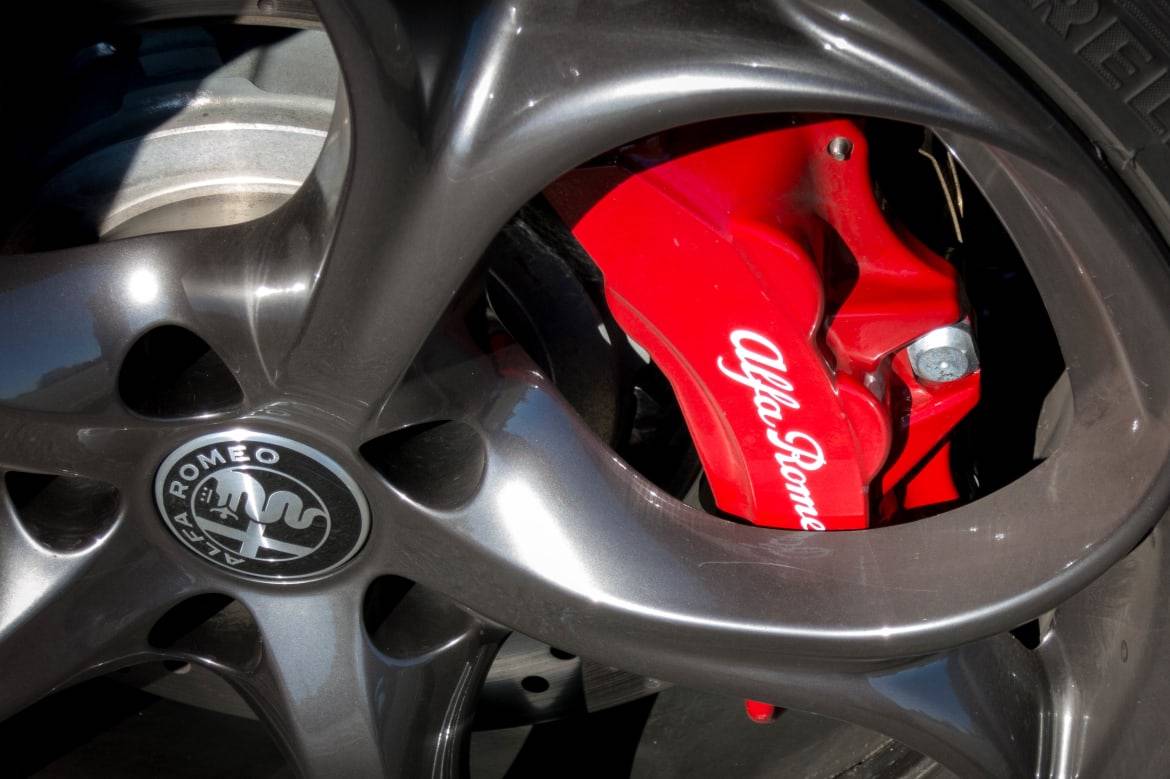
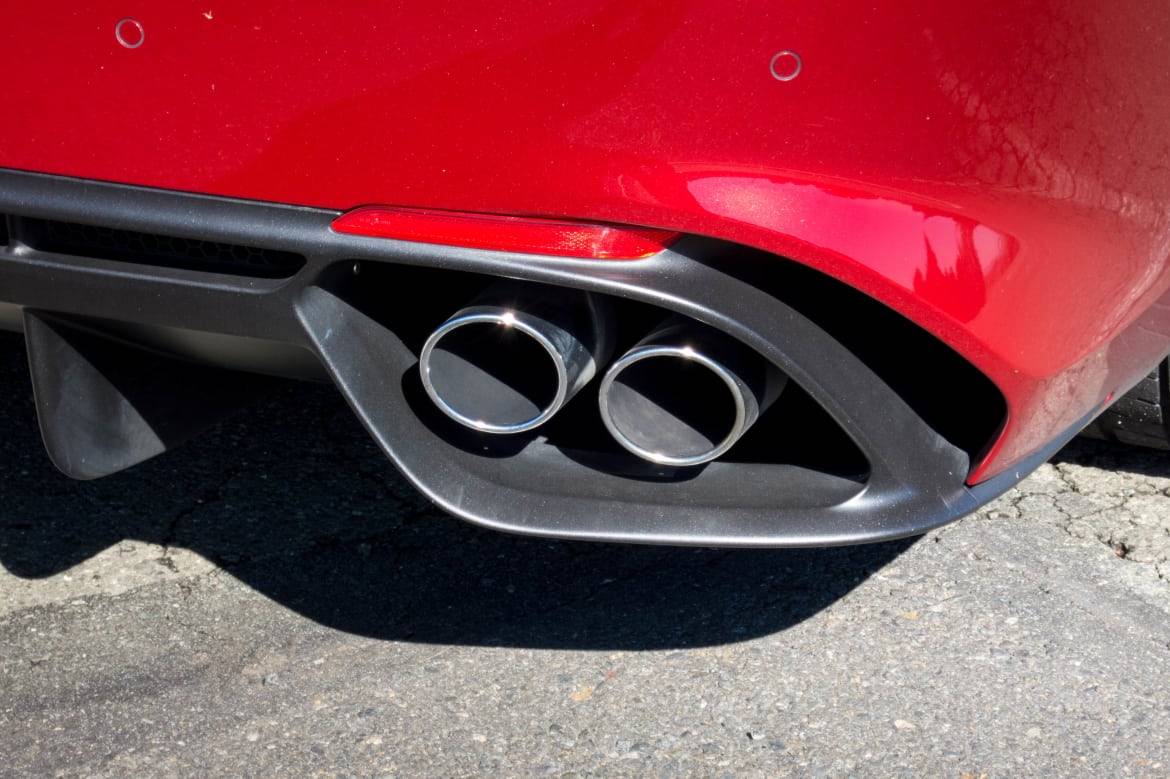
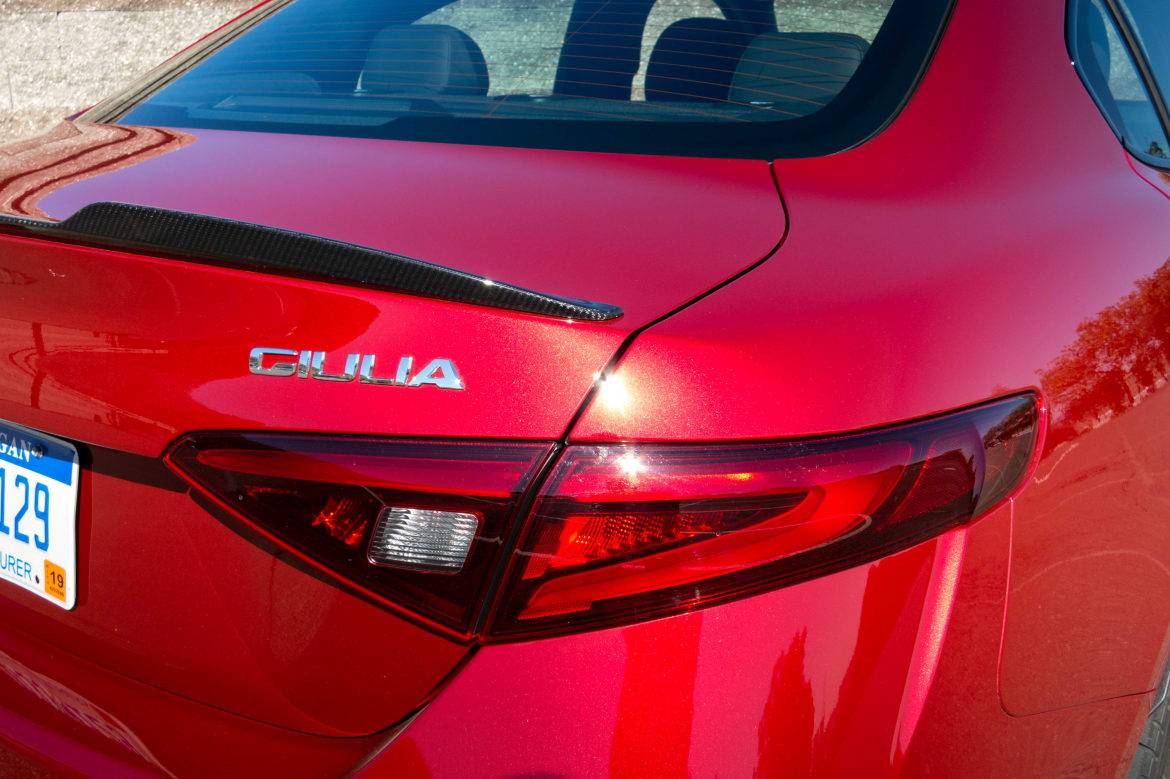

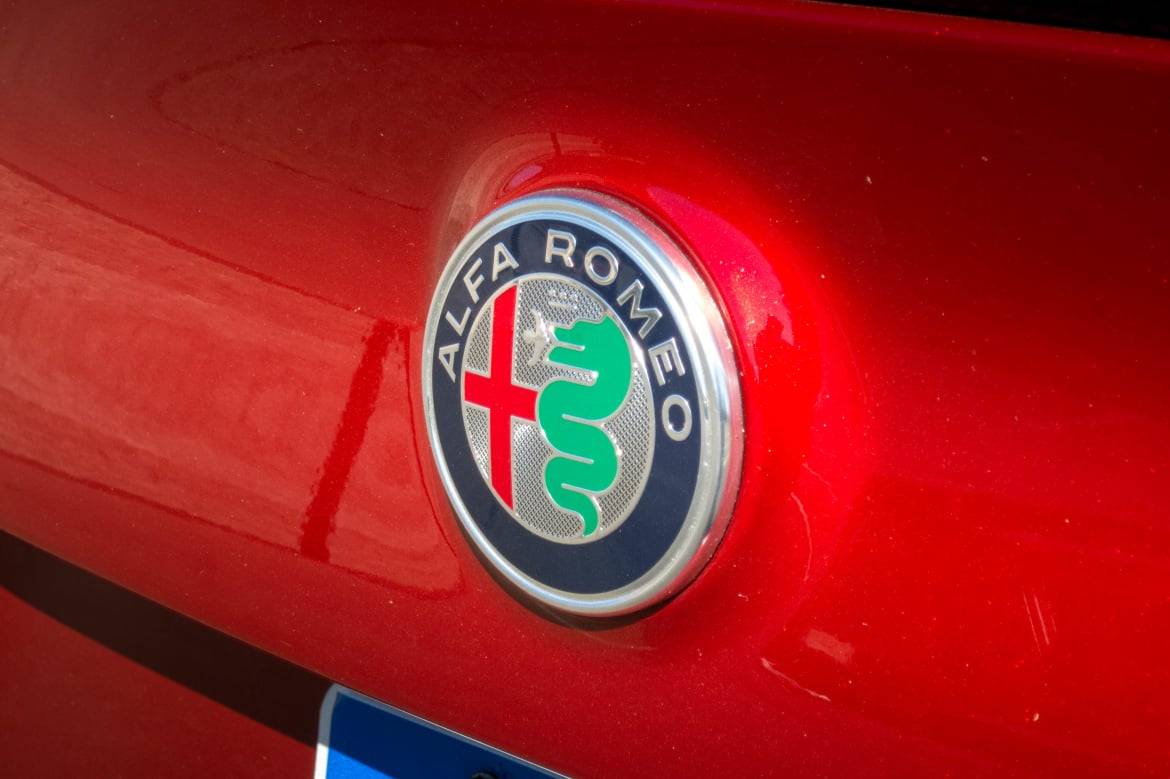
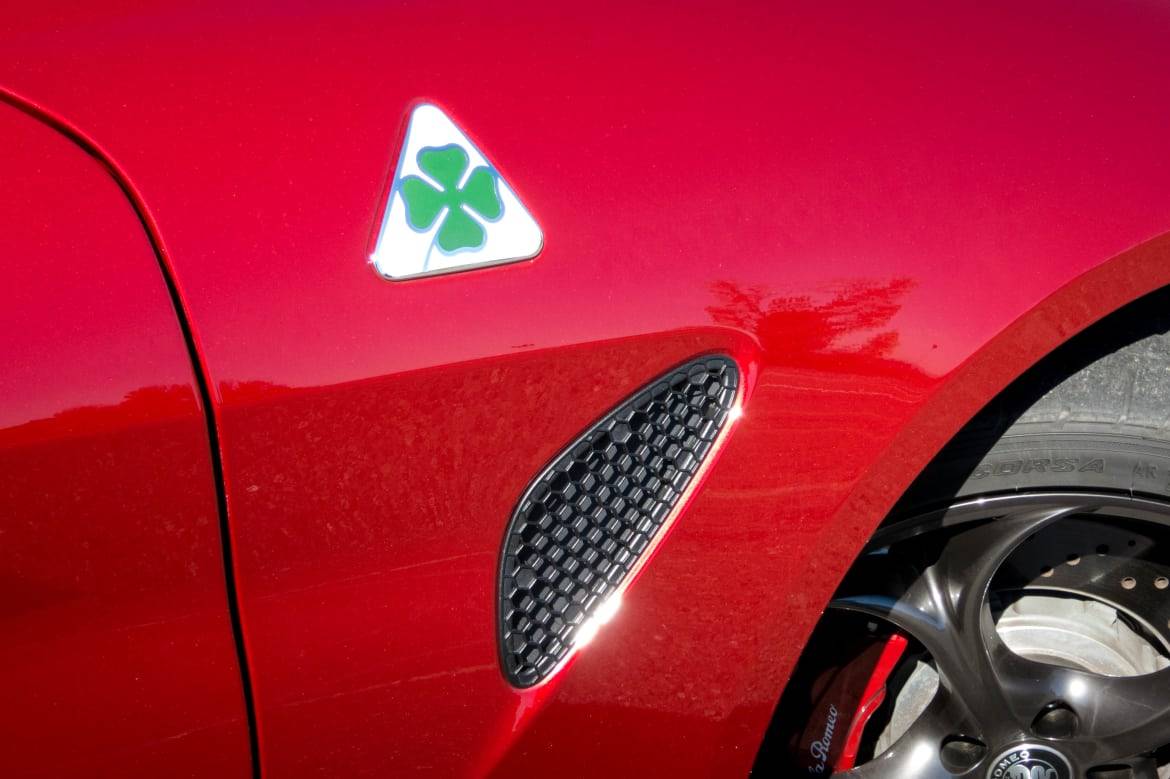
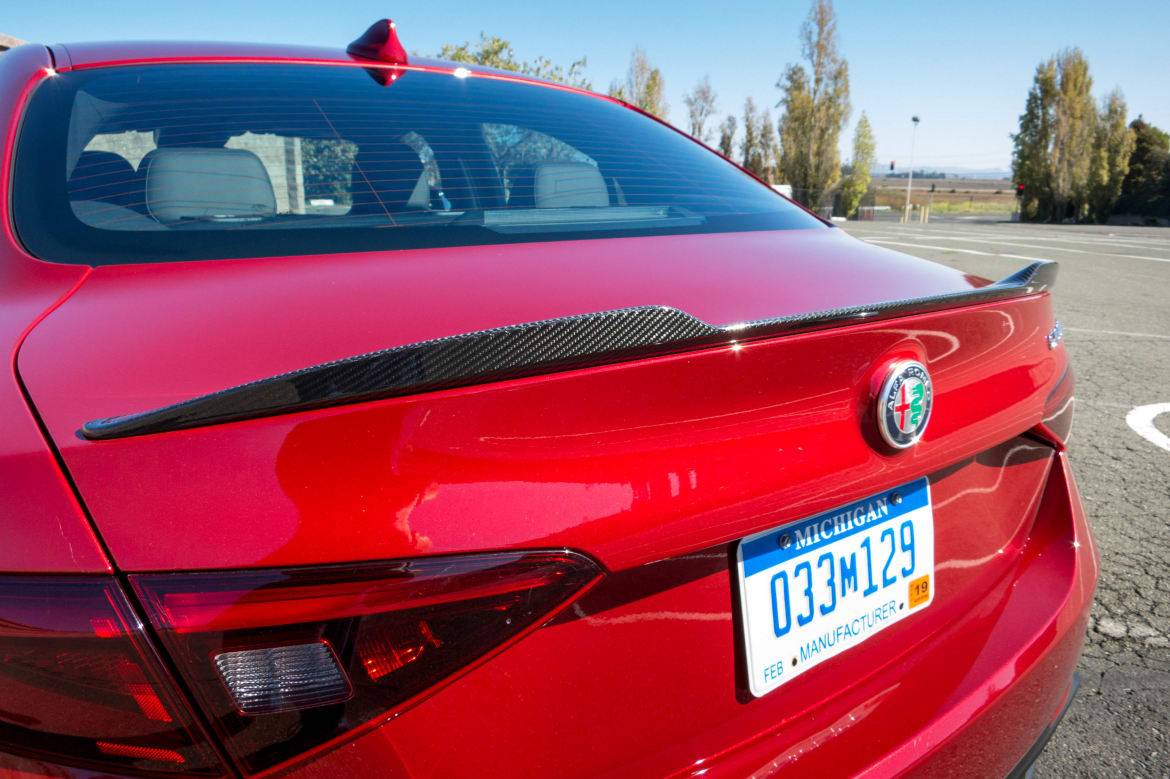
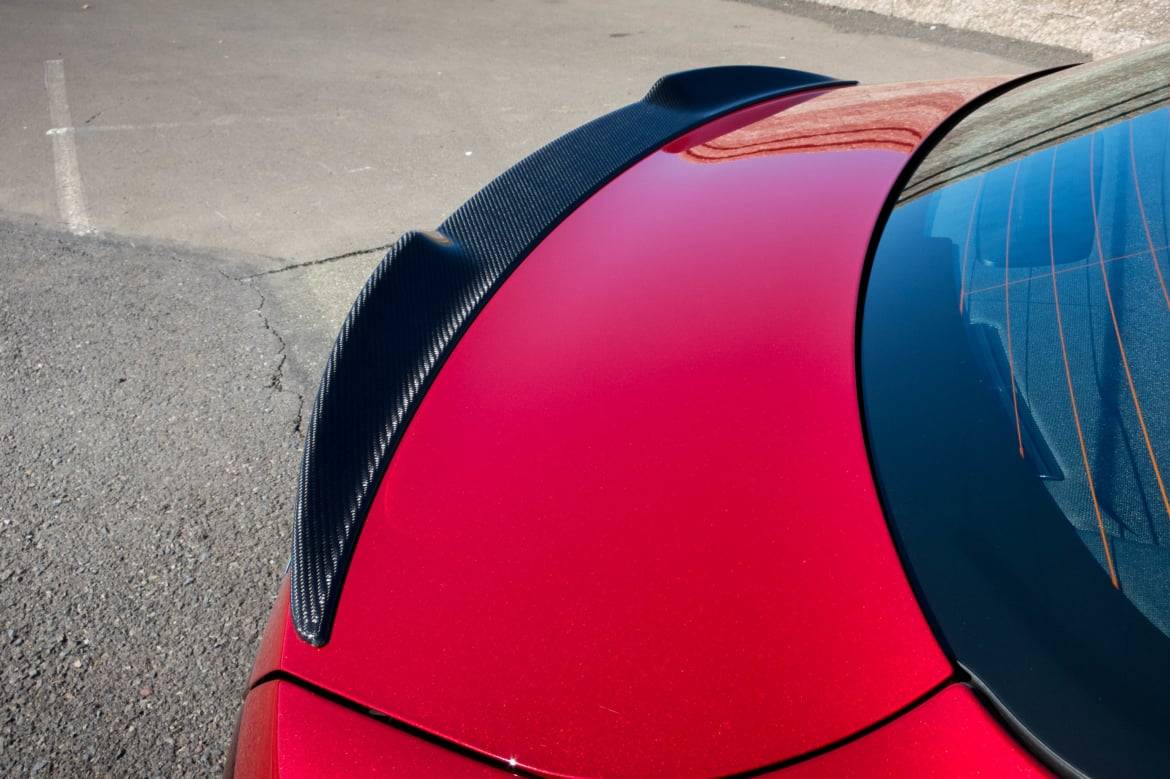
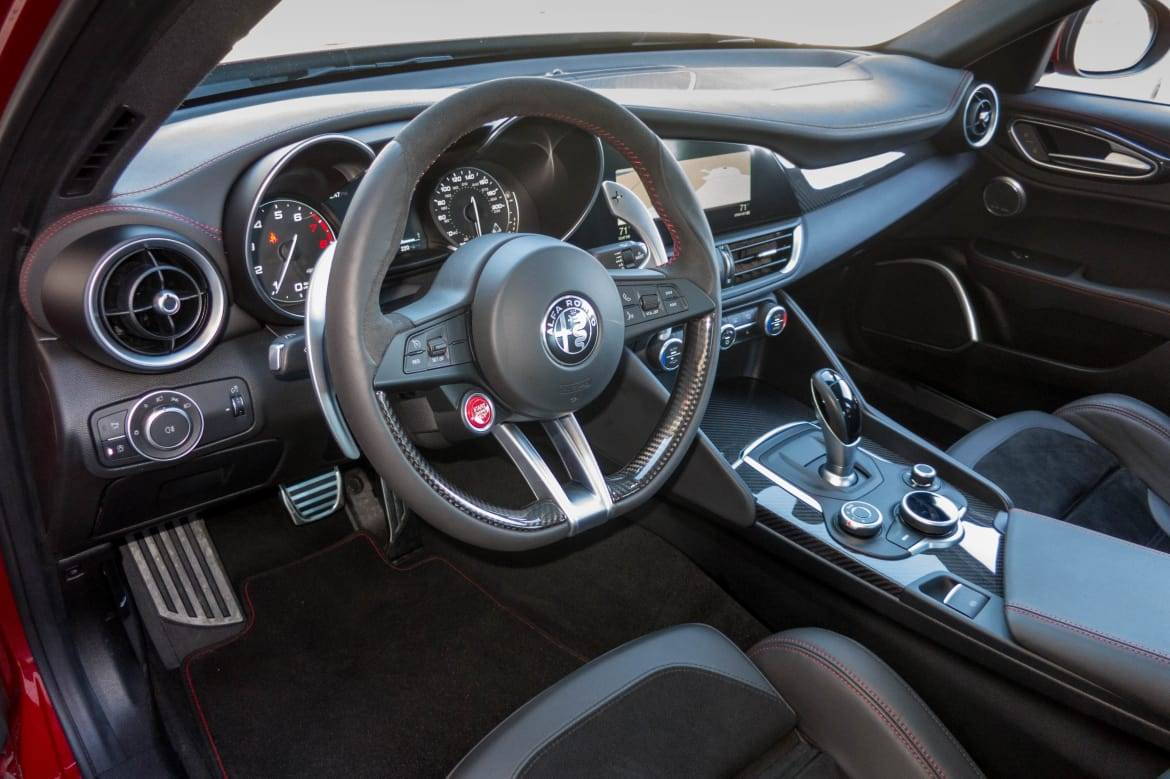
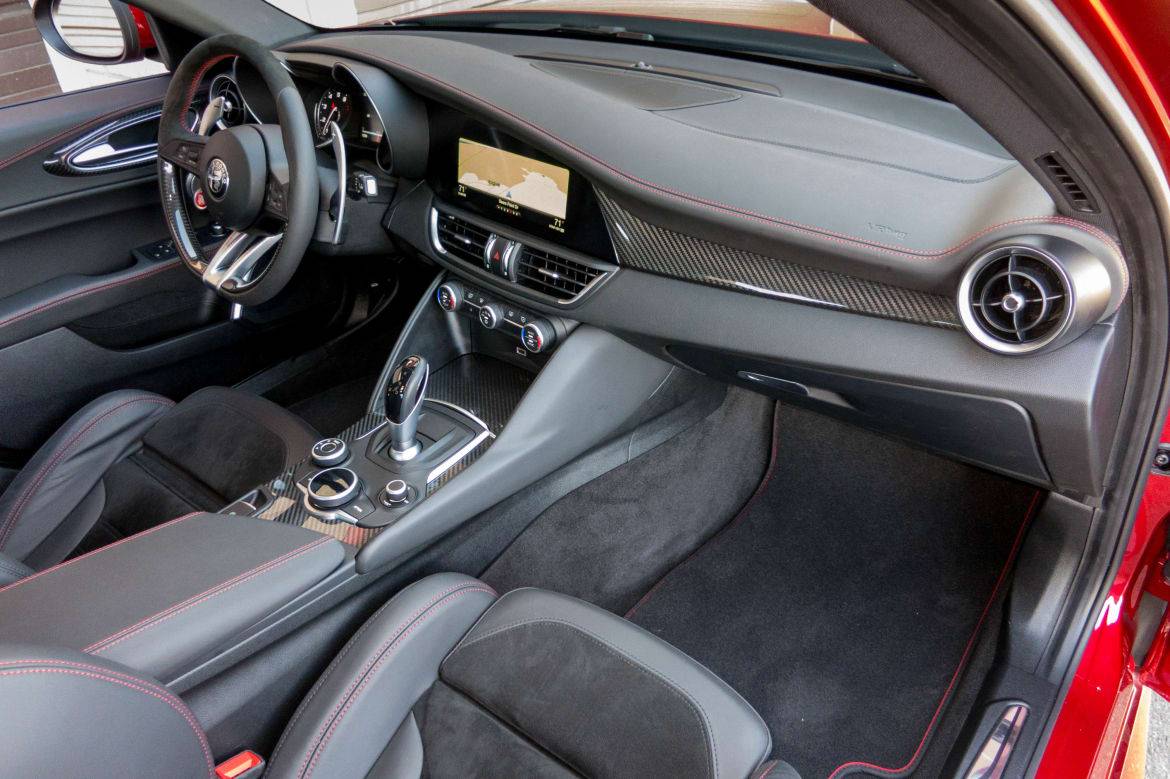
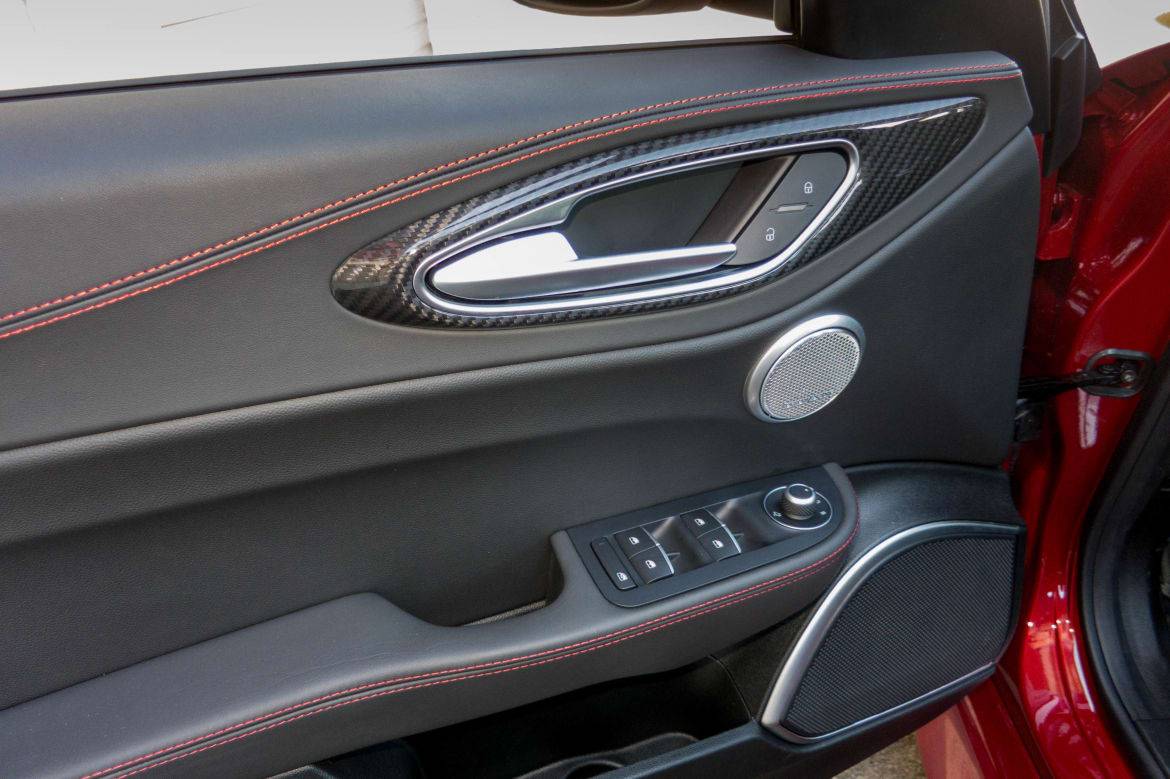
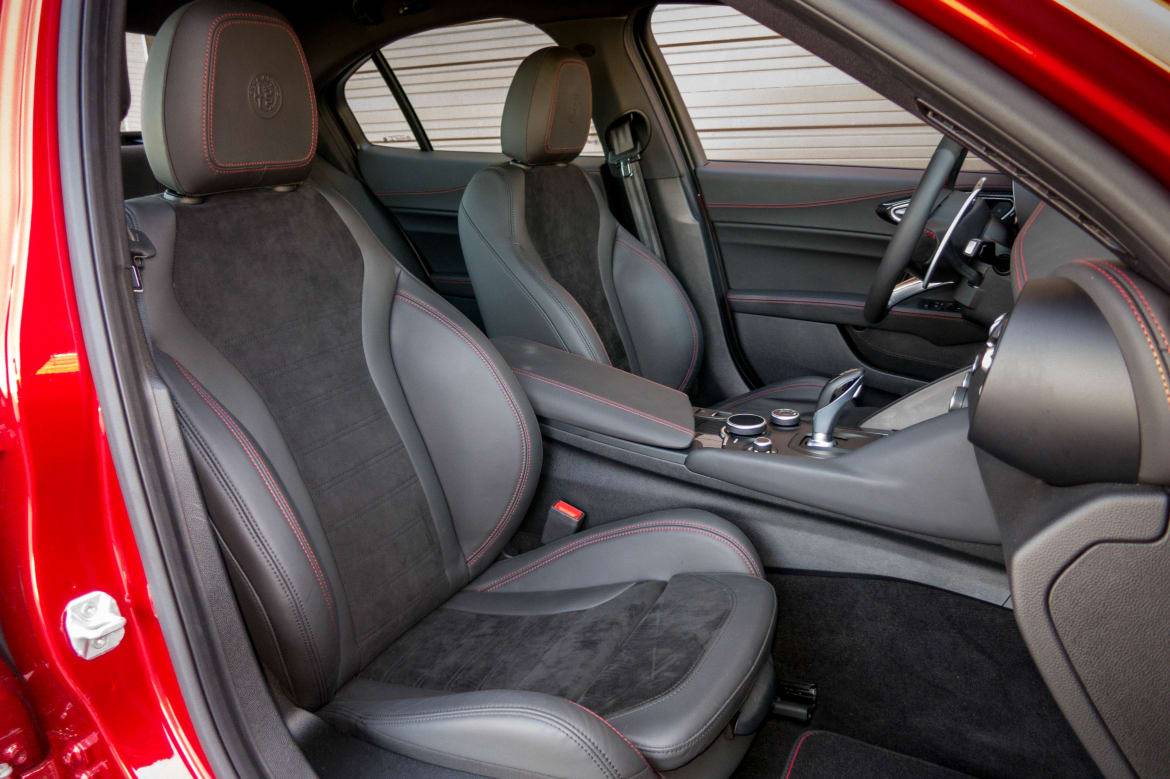

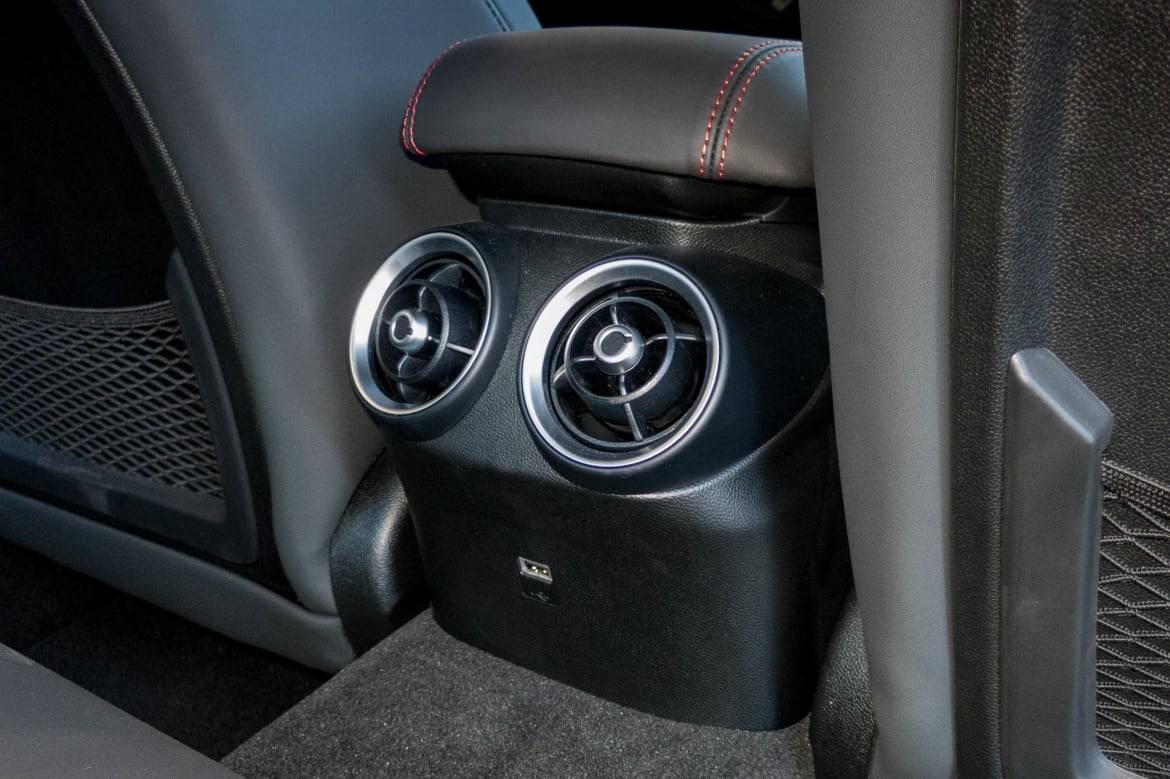
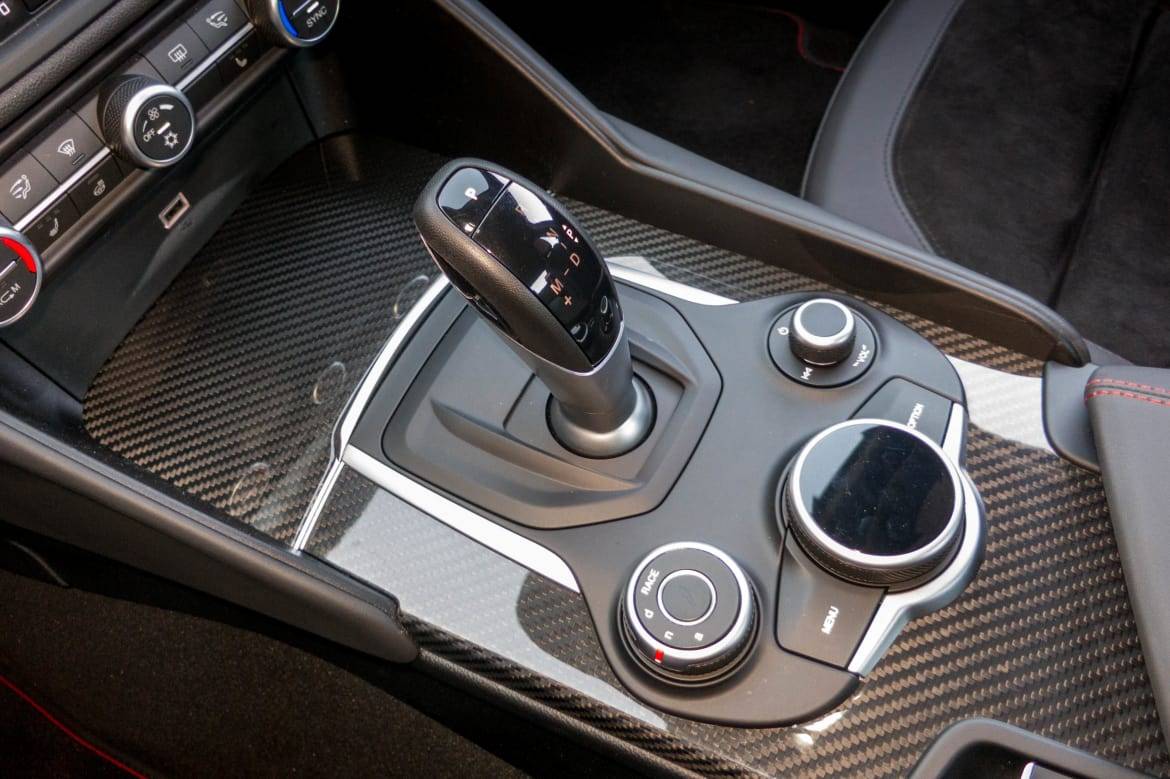

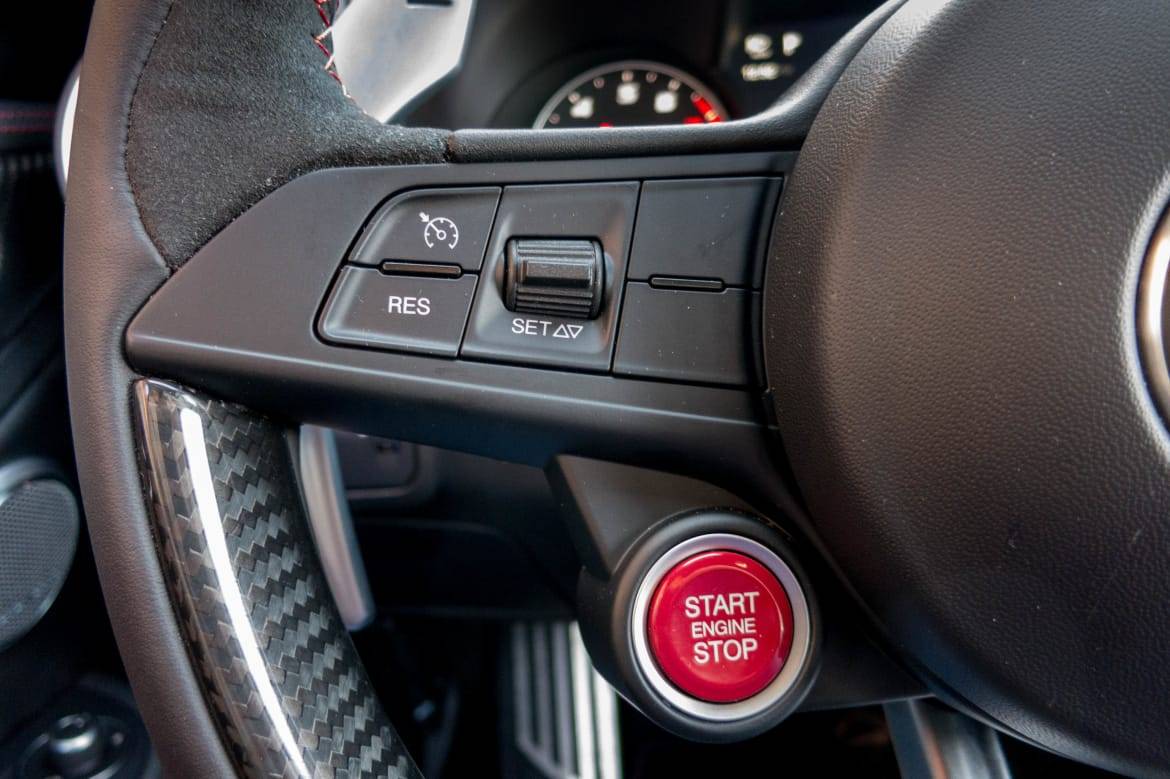
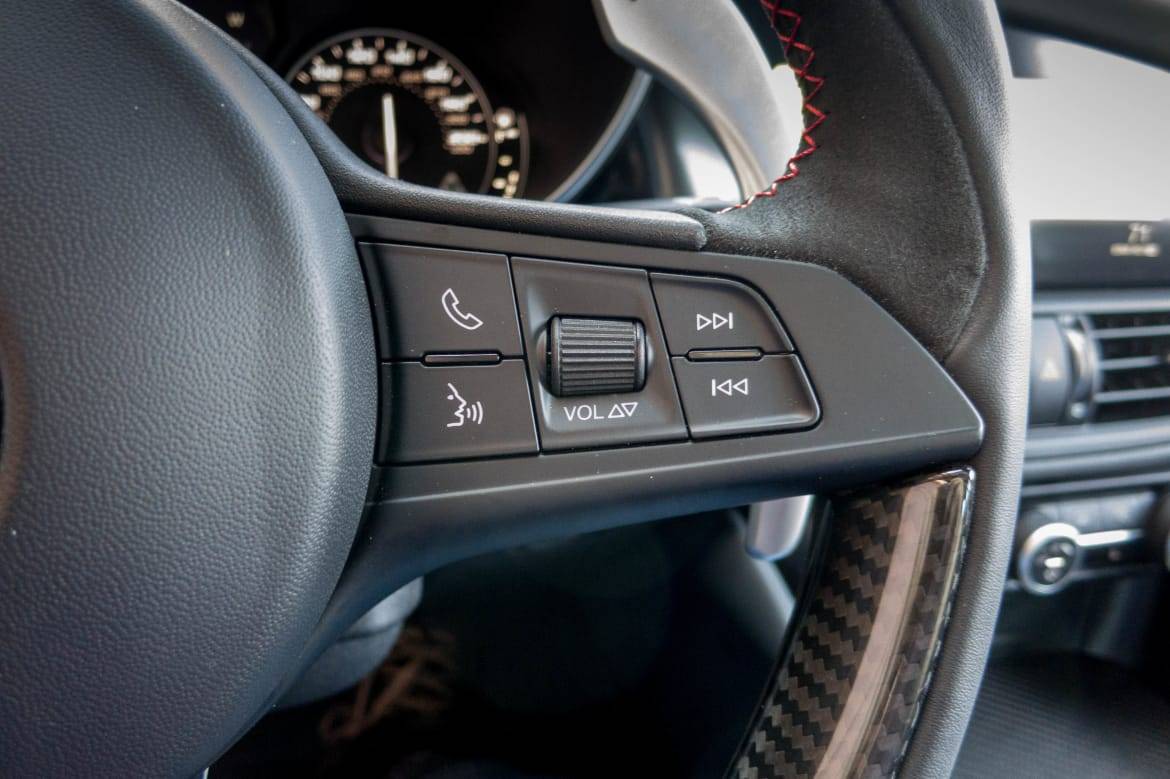
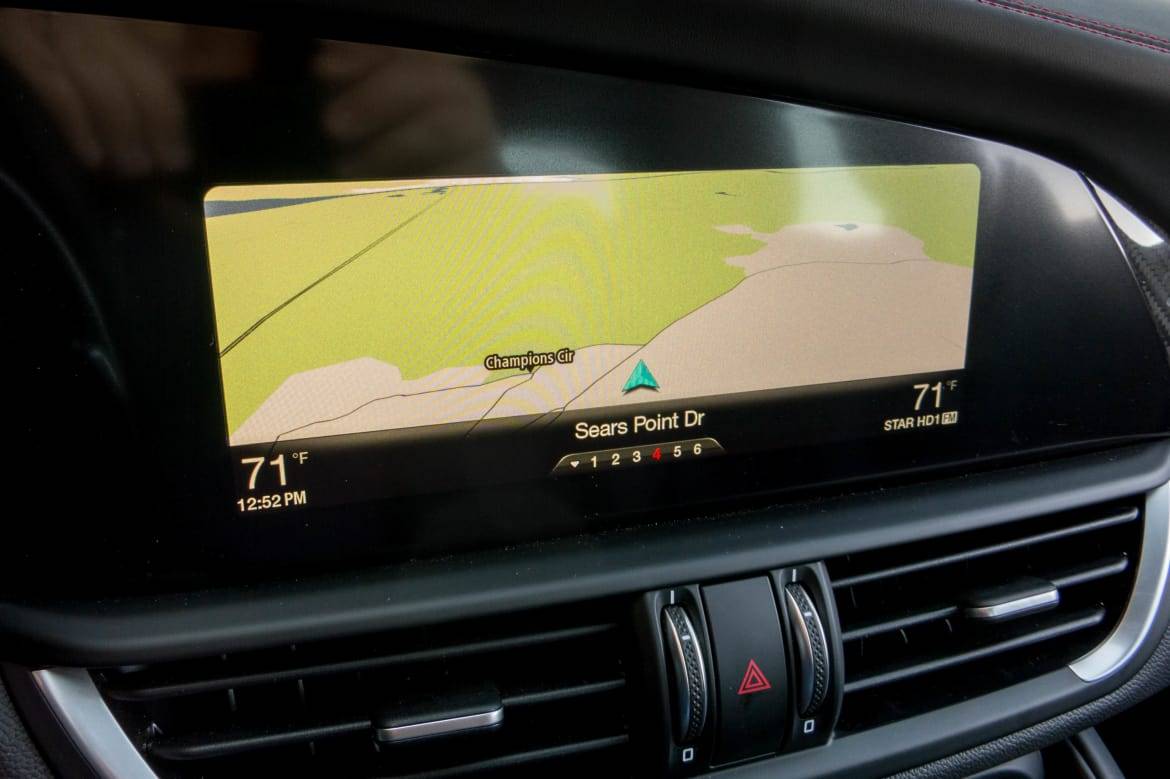

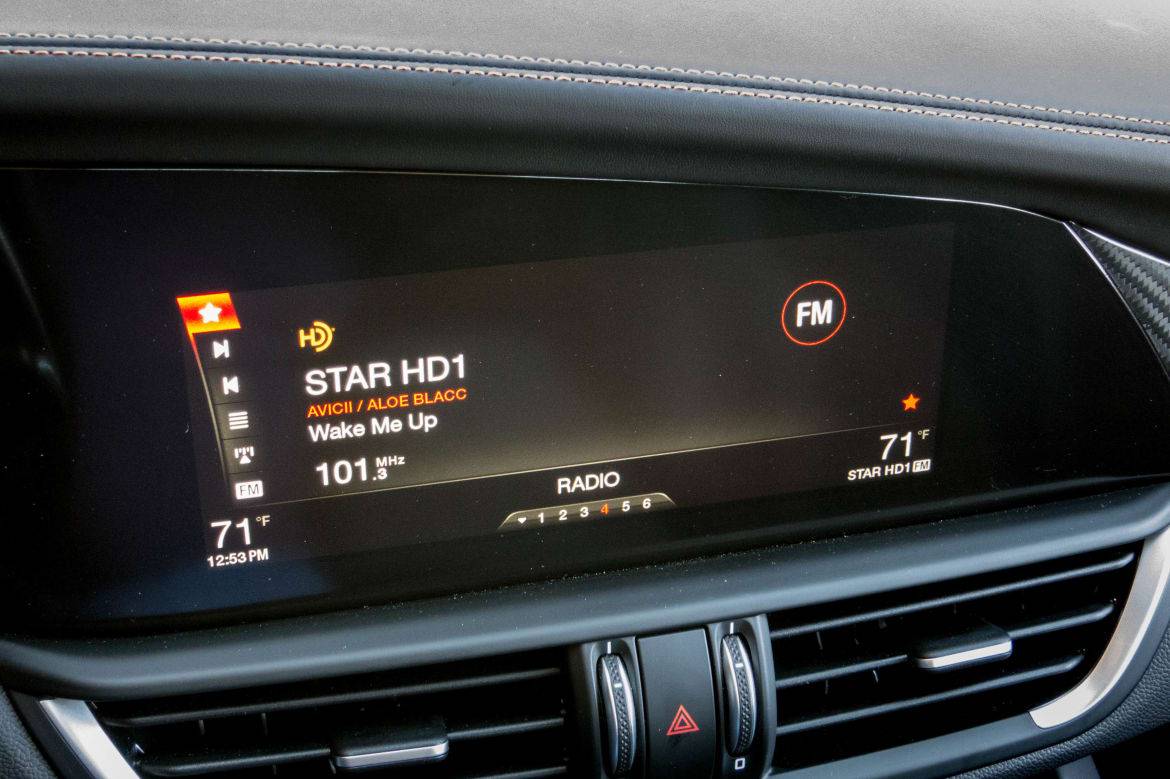


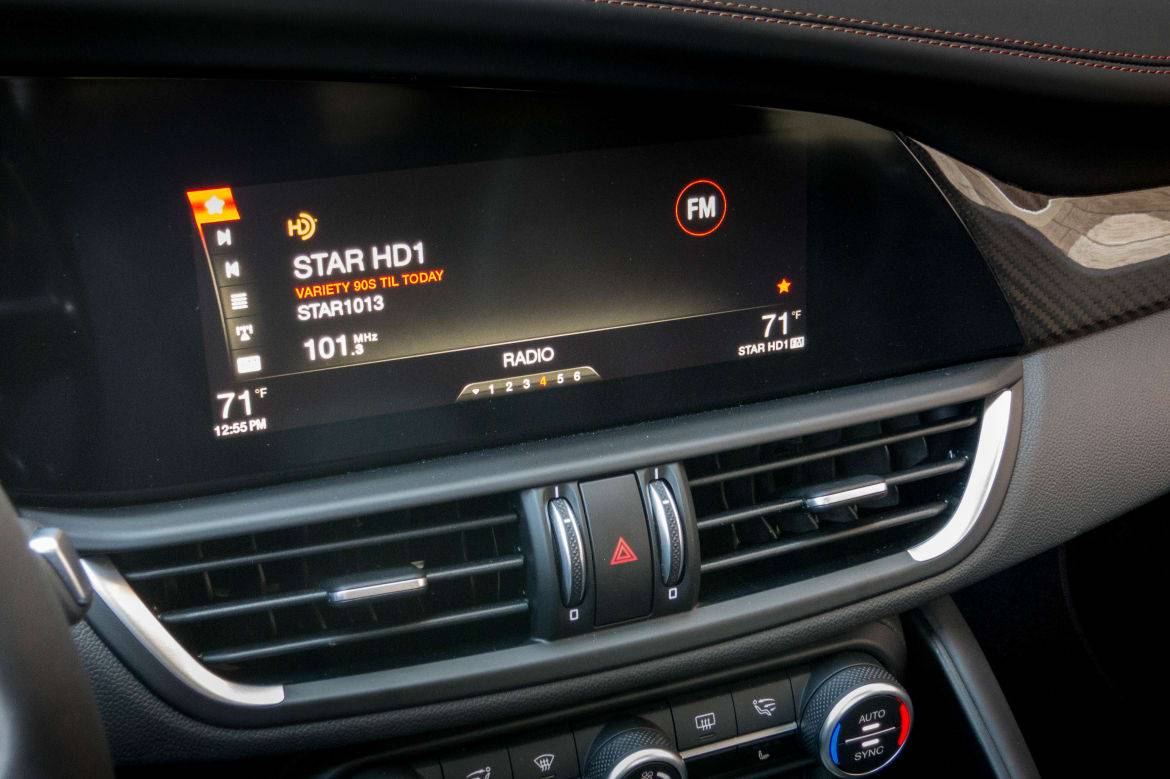
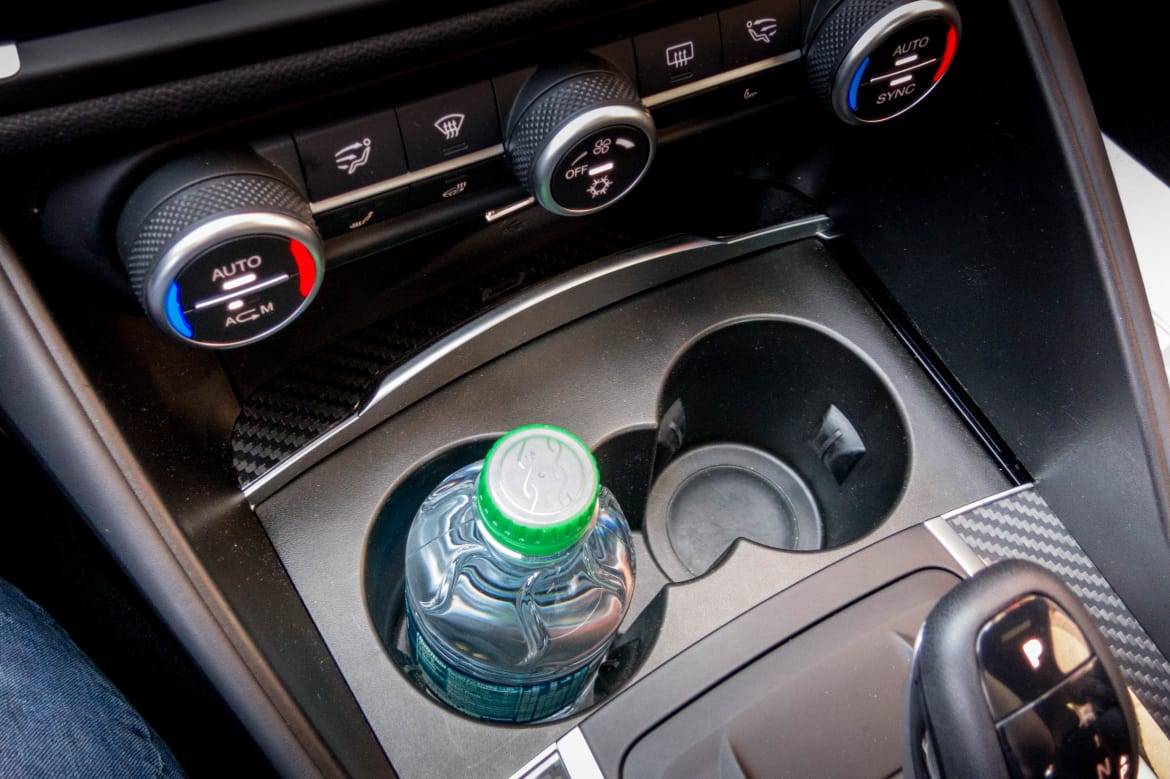



































Detroit Bureau Chief Aaron Bragman has had over 25 years of experience in the auto industry as a journalist, analyst, purchasing agent and program manager. Bragman grew up around his father’s classic Triumph sports cars (which were all sold and gone when he turned 16, much to his frustration) and comes from a Detroit family where cars put food on tables as much as smiles on faces. Today, he’s a member of the Automotive Press Association and the Midwest Automotive Media Association. His pronouns are he/him, but his adjectives are fat/sassy.
Featured stories
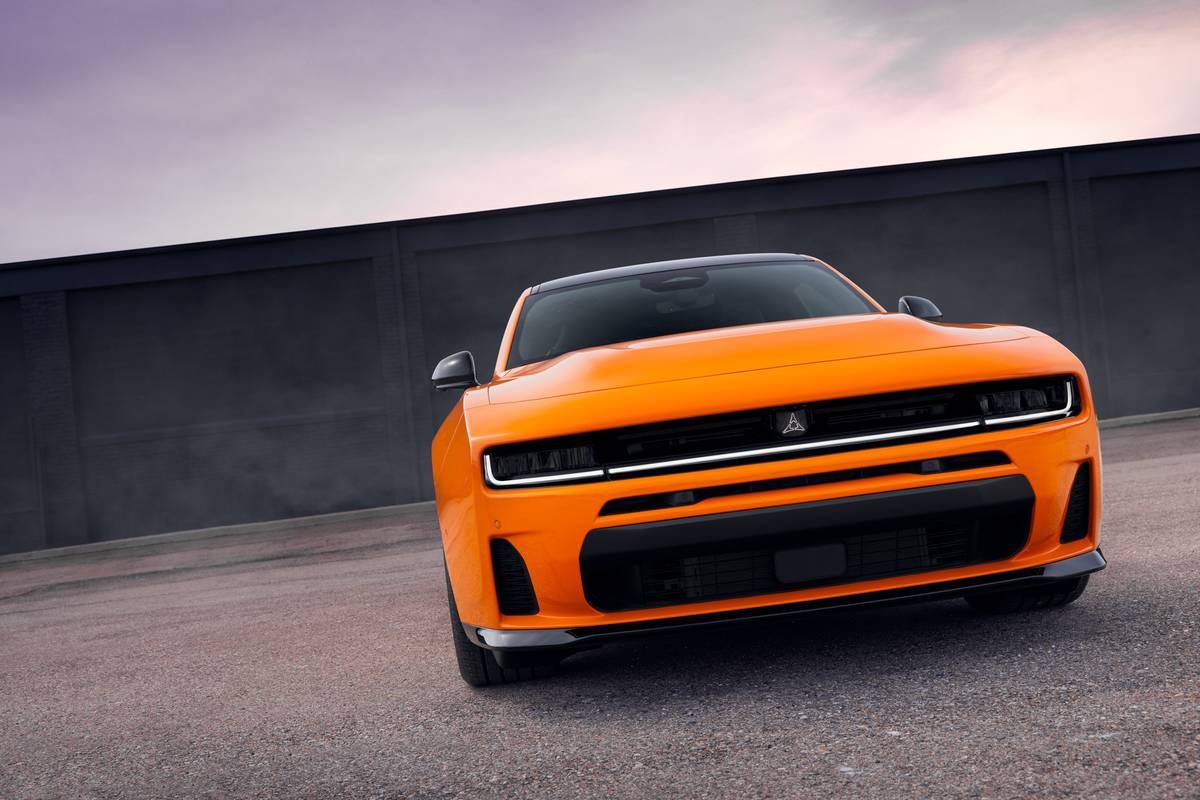
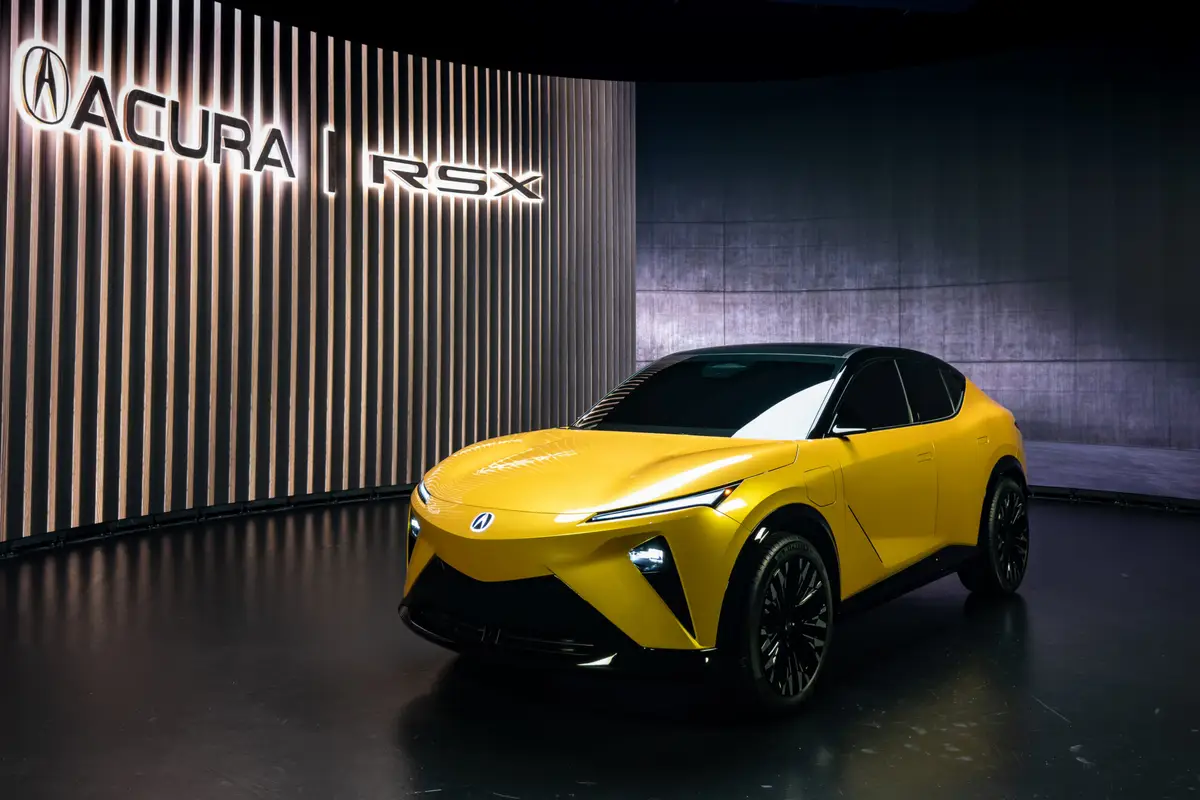
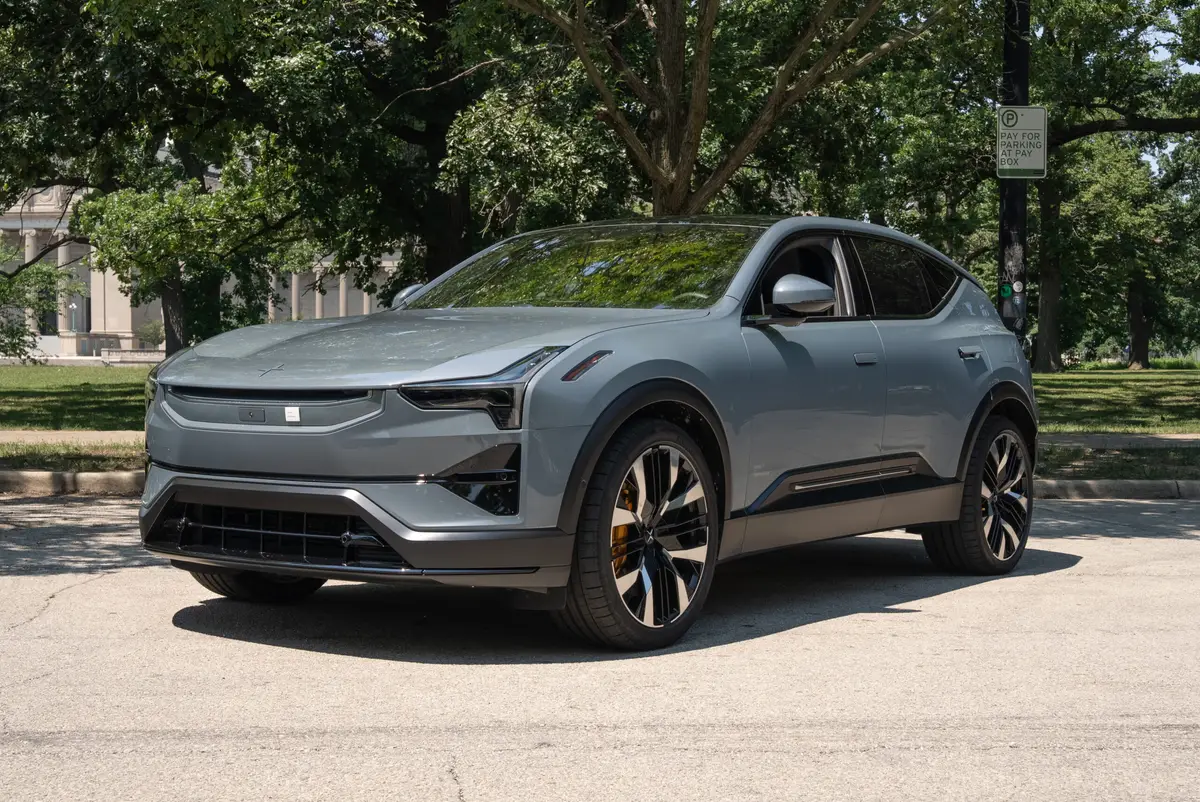
2025 Polestar 3 Review: Understated Electrified Luxury



































